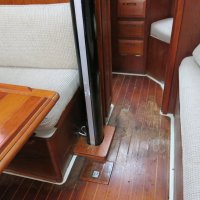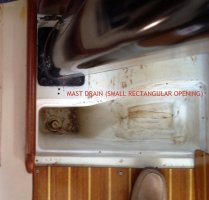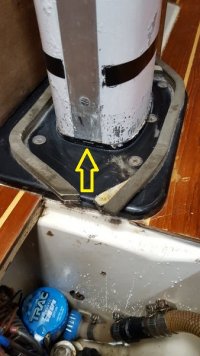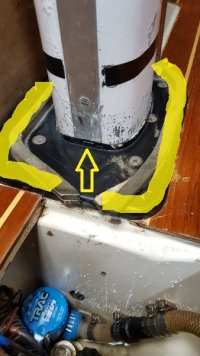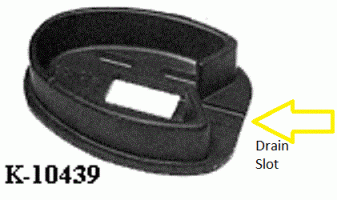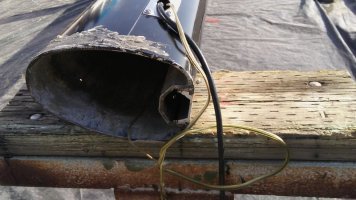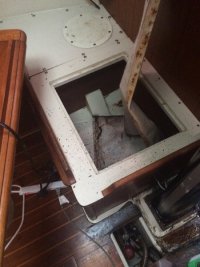Filkee
Sustaining Member
This is my first ever post and it may be in the wrong place, but I have to start somewhere.
I recently bought a 1985 E32-3. She's been on the hard in plastic for at least three years and somewhat neglected. The result is a number of leaks that have done a number on the interior. I found the one that ate the teak around the port lights stopped it so I'm feeling pretty smart about that part, but water is coming down the mast (as it should, I know) but it's getting in places I wish it wouldn't. At first, I thought it was because she was sitting bow up a little in the cradle that the water wasn't flowing properly out the tray, but I had the yard shift her and now I'm thinking maybe it's wicking down the electric wire that comes out of the mast and goes into the settee. It's turning the wood there to wicker and threatening to do the same to the same to the bulkhead. You can see the wire in the photo below. You can also see the sawdust that was once the cabin sole.
My ambition for this winter is to stabilize her and actually enjoy a season of sailing before going deep on restoration. Ideas appreciated.

I recently bought a 1985 E32-3. She's been on the hard in plastic for at least three years and somewhat neglected. The result is a number of leaks that have done a number on the interior. I found the one that ate the teak around the port lights stopped it so I'm feeling pretty smart about that part, but water is coming down the mast (as it should, I know) but it's getting in places I wish it wouldn't. At first, I thought it was because she was sitting bow up a little in the cradle that the water wasn't flowing properly out the tray, but I had the yard shift her and now I'm thinking maybe it's wicking down the electric wire that comes out of the mast and goes into the settee. It's turning the wood there to wicker and threatening to do the same to the same to the bulkhead. You can see the wire in the photo below. You can also see the sawdust that was once the cabin sole.
My ambition for this winter is to stabilize her and actually enjoy a season of sailing before going deep on restoration. Ideas appreciated.

